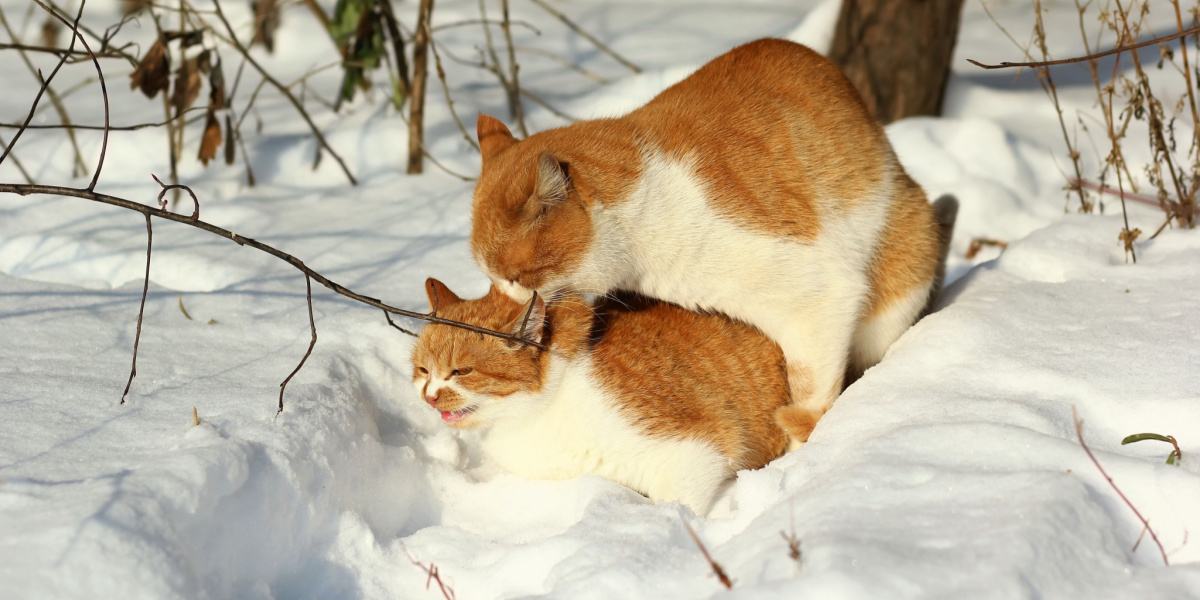
If you’ve ever witnessed the act of feline mating, you would be forgiven for thinking that you were watching a prime fight instead. What with all the biting, screeching, and writhing around, even just being in heat seems quite a drama for cats.
Cats are hormonally driven to mate, and this sex drive will lead them to actively seek out a partner. It is unlikely that female cats enjoy mating as the male cat has a barbed penis, and the female cat often screams and tries to get away during penetration. Cats can mate multiple times per heat, and have multiple litters per year, so spaying or neutering your cat is advisable to prevent unwanted kittens.Key Takeaways
Female cats are polyestrous (they have multiple cycles each year) and allow multiple matings per heat cycle, so hormonal cats are a common spectacle in the warmer, lighter months.
Cats’ mating is often fairly brief and violent, with the queen (female cat) often screaming and trying to free herself. This is thought to be due to the male cat’s barbed penis, and certainly, the act itself looks painful.
Read on for more information about the cat breeding cycle, and what to do if you don’t want a litter of kittens to appear.
Also Read: How To Tell If A Cat Is Pregnant: Labor Signs, Behavior, And Timeline
Estrous Cycles in Cats
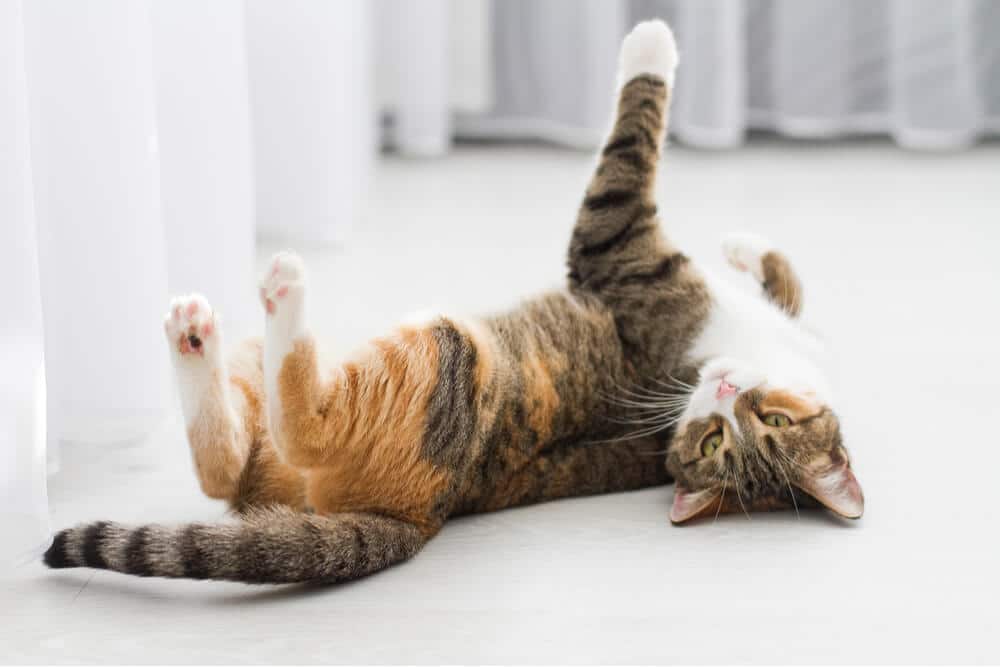
Female cats reach puberty from around 4 to 6 months of age. After puberty, they begin having regular estrus cycles (heats, or heat cycles). Cats are seasonal breeders and will come into heat every 2 to 3 weeks during the warmer, lighter months. The breeding season in the Northern Hemisphere runs from February to October. Indoor cats may cycle all year round if the conditions are correct.
Estrus, the period where the female cat is receptive to mating, is fairly obvious in cats. Signs that your cat is in heat include:
- Constantly asking to go outside, or escaping through windows or doors left open.
- Vocalizing loudly and continuously—the sound is best described as yowling (rather than meowing), can be very loud, and often causes concern amongst owners that the cat is in pain.
- Rolling around on the floor and rubs herself against people, the floor, and other objects.
- Kneading at the floor with her back feet.
- If you stroke along her back, she might lower her front end and elevate her back end up into the air, moving her tail from side to side.
- Licking at her genital region.
- Urine spraying around her home environment.
Each cat’s heat cycle lasts around five to eight days, although some can be longer, up to around 21 days. If no mating occurs, the female cat doesn’t ovulate and enters a new cycle. This pattern continues throughout the mating season unless a pregnancy occurs. A cat’s cycle returns swiftly after pregnancy and birthing.
Also Read: Cat In Heat (Estrous Cycles): Signs, Symptoms & Care
Cat Mating and Reproduction
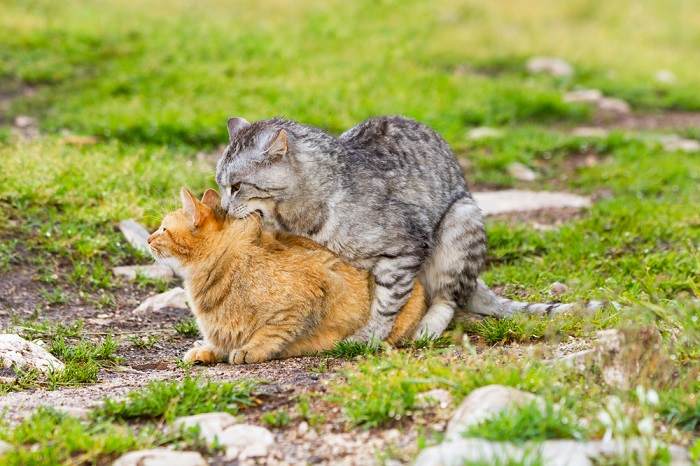
The feline mating process is thought to be painful due to the male cat’s barbed (spiked) penis.
If a female cat in heat meets a receptive male, she will demonstrate her willingness to mate by assuming a distinctive posture called lordosis. She will bend her forelegs, with her chest tucked down to the ground and back end raised high. Her tail will move to one side, to expose her genital area.
Also Read: Why Do Cats Scream When Mating?
The male bites the female’s neck and mounts her. A male cat’s penis is barbed—it is covered in tiny spikes. The function of these barbs is thought to be to scrape against the female’s vagina during penetration, which then stimulates ovulation.
It also makes the process painful, and the queen often screams, rolls, and tries to get away from the male, who holds her firmly by biting her neck. After the completion of mating behavior, the female cat will usually show some discomfort, called the after reaction, mostly rolling around and frantically cleaning herself. This can persist for around 10 minutes.
Cat sex is violent, swift and does not appear to be pleasurable—at least to the female. Cats are indeed hormonally driven to mate, and this sex drive will lead them to actively seek out a partner. However, the act of sexual intercourse itself appears to be more functional than anything else.
Female cats can be mated by multiple males over a fairly short period of time. This includes relatives, such as a father or brother. The mating process is very quick—it’s easy for an unspayed cat to become accidentally pregnant.
Also Read: Can Cats Be Gay?
How to Tell If a Cat Is Pregnant
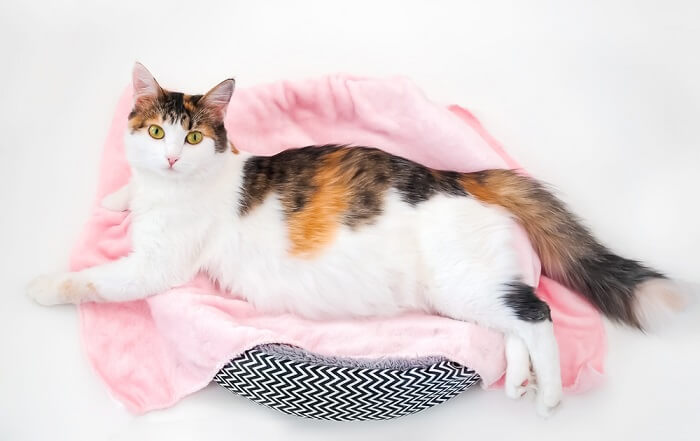
Your veterinarian can help determine if your cat is pregnant.
Ovulation occurs 20 to 50 hours after mating, and implantation occurs at around 12 to 13 days. The gestation (pregnancy) length is 64 to 69 days. Signs of pregnancy include a larger belly, an increased appetite, and swollen mammary glands. However, these symptoms can also be present in a false pregnancy.
It is possible to determine pregnancy by palpation of the abdomen by a qualified professional such as a veterinarian, but the most accurate way to tell is by an ultrasound scan. This is safe for both mother and kittens and is usually done around 30 days after the mating.
Cats usually have multiple kittens per litter, with an average of four to five kittens. They can get pregnant again very swiftly after birth, even if still nursing their litter. Cats rarely need assistance when giving birth.
Here are some scenarios where professional veterinary advice should be sought:
- Green discharge, or more than a few drops of blood during labor.
- If your cat is actively straining for more than 30 minutes without producing a kitten.
- Exhaustion.
- A kitten is stuck in the pelvic canal. Do not attempt to budge the kitten yourself, as this can cause harm to both queen and kitten.
- Any problems with the sac or umbilical cord. The mother should remove these, but first-time mothers might need some help.
Also Read: How To Tell If A Cat Is Pregnant: Labor Signs, Behavior And Timeline
Spay and Neutering in Cats
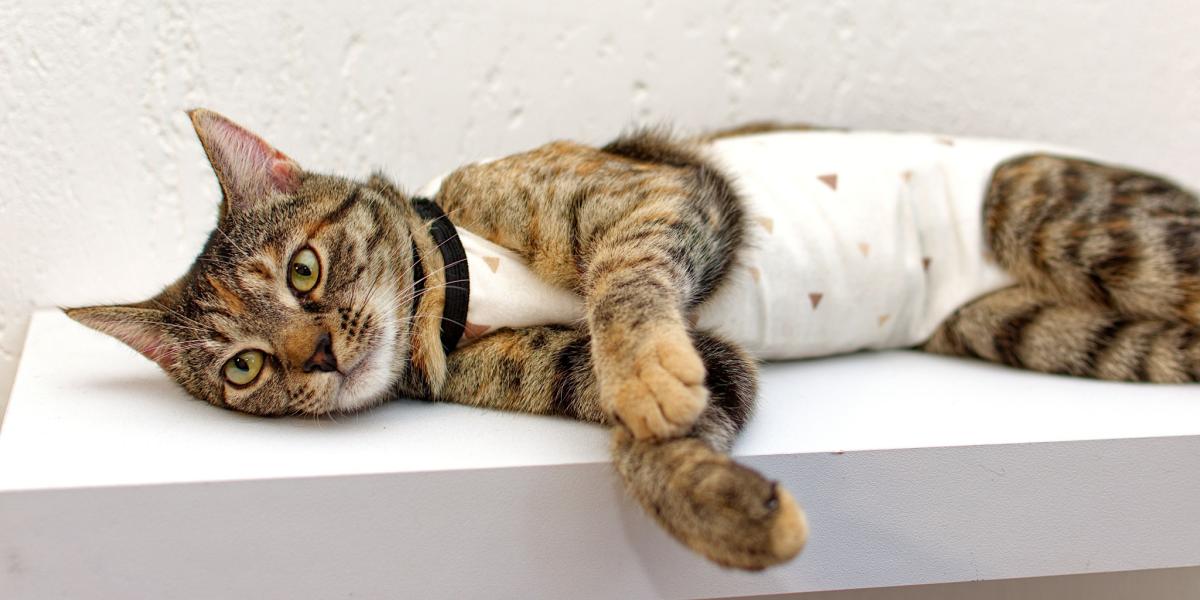
Spaying and neutering are the best ways to ensure cats do not have unwanted litters.
As cats can reach sexual maturity from as young as 4 months and have multiple litters of multiple kittens a year, neutering is a responsible decision for all cat owners, unless you specifically want to breed. A female cat can undergo a spay procedure, whereby the reproductive organs (ovaries and uterus) are removed surgically.
Tomcats can be castrated, with their testicles removed. This quick surgery removes the organs necessary for procreation but also removes the hormonal influences leading to the behavioral changes seen.
Intact male cats have been shown to roam further from home, and both sexes are keen to escape if they sense suitors nearby. Neutering can also protect against diseases of the reproductive system.
Final Thoughts
Cats are seasonal breeders, with a mating season operating in the warmer and lighter months of the year. Female cats go into estrus every few weeks throughout this period from sexual maturity at around 4 months of age. When on heat, queens will yowl, roll around and rub against objects and people, spray urine, and try to get to males.
Mating is brief and painful, with the barbed penis of the male cat scraping at the female’s vagina, stimulating ovulation. Cats can have multiple matings per heat, and multiple litters per year, so neutering is advisable in most cases.
Also Read: How Much Does It Cost Spay or Neuter A Cat?
Frequently Asked Questions
Do cats get pleasure from mating?
No, this seems unlikely—cat mating is brief and quite violent. The male cat has a barbed penis, and the female cat often screams and tries to get away during penetration.
Do cats fall in love after mating?
Cats can form social bonds but are certainly not monogamous, and do not form consistent male-female pairs. In fact, female cats can mate with multiple different males during a single heat.
Why do female cats cry during mating?
A male cat’s penis is barbed, and these little spikes scrape along the female cat’s vagina during copulation. This has the function of stimulating the female to ovulate, but is painful and leads to the female cat screaming and trying to get away.
What do cats do when they wanna mate?
During the breeding season, unneutered cats will desperately try to get to potential mates. They will become very vocal, spray urine, and roll around on the floor. Female cats will rub their bodies against any surface, and assume a position with their front end down and their back end elevated upward.







